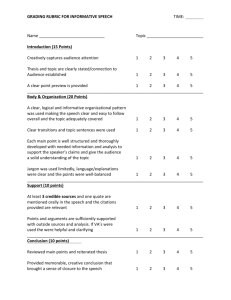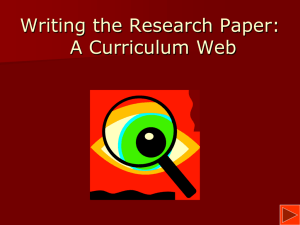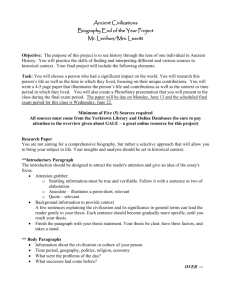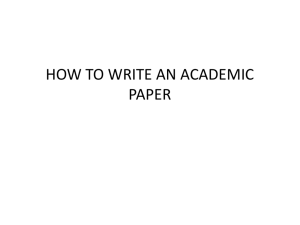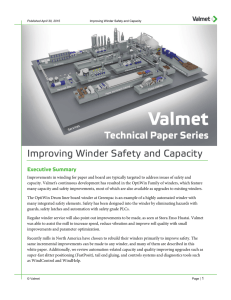Content Area Research Project
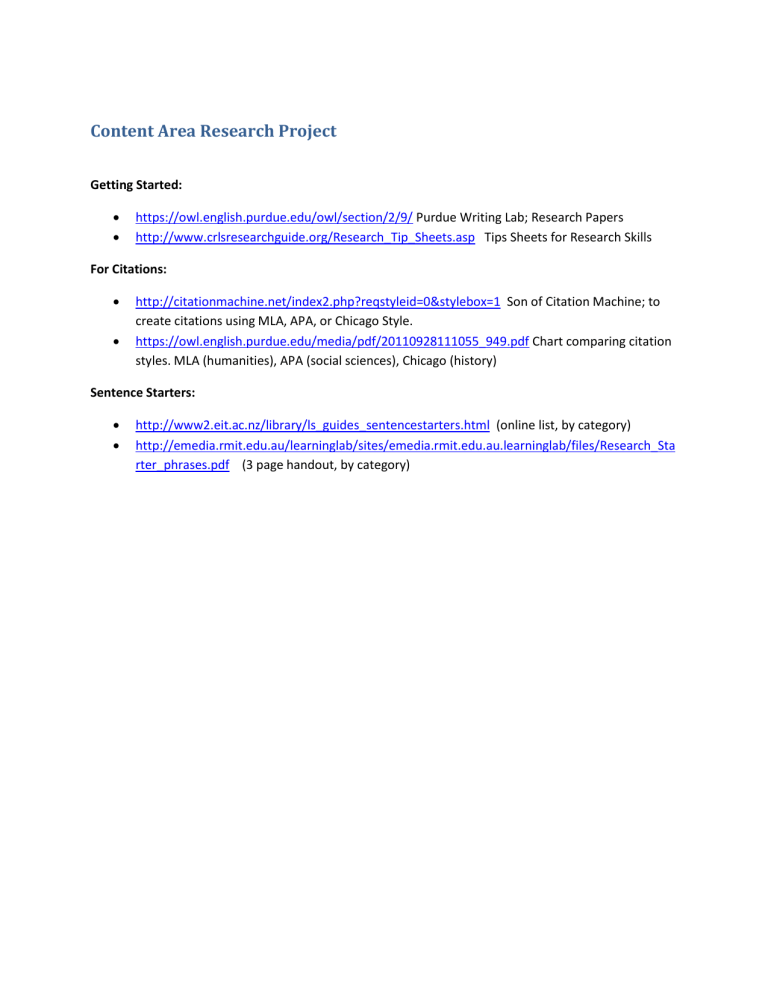
Content Area Research Project
Getting Started:
https://owl.english.purdue.edu/owl/section/2/9/ Purdue Writing Lab; Research Papers http://www.crlsresearchguide.org/Research_Tip_Sheets.asp
Tips Sheets for Research Skills
For Citations:
http://citationmachine.net/index2.php?reqstyleid=0&stylebox=1 Son of Citation Machine; to create citations using MLA, APA, or Chicago Style.
https://owl.english.purdue.edu/media/pdf/20110928111055_949.pdf
Chart comparing citation styles. MLA (humanities), APA (social sciences), Chicago (history)
Sentence Starters:
http://www2.eit.ac.nz/library/ls_guides_sentencestarters.html
(online list, by category)
http://emedia.rmit.edu.au/learninglab/sites/emedia.rmit.edu.au.learninglab/files/Research_Sta rter_phrases.pdf
(3 page handout, by category)
Steps for Mini-Research Project:
Adapted from: http://www.time4writing.com/high-school/writing-research-papers/ and http://www.crlsresearchguide.org/00_basic_steps.asp
; IIM 7 Steps to Successful Research (available in school library)
Each step is briefly explained and includes suggestions of how to assess that students have mastered the step.
Step 1 :
Students explore why research is important. Students select a general topic for research, they make a list of key words to help search for information, and they find an overview of their topic. Provide students with final summary rubric.
Students select topic (from list or within a framework for the unit); Teacher approves topic
Step 2 :
Students become “research hounds” when they spend as much time as possible finding all the research available.
This is probably the most time-consuming part of the research paper. Students refine their research subject and write a statement of purpose on their chosen topic.
Annotated bibliography – List of resources (online, print, other) with one or two sentence explanation as to how the resource will help them with their project.
Step 3 :
Students brainstorm questions about their focused topic, group questions under similar headings, and add any new questions. In this phase, Teacher shares/models various methods for organizing ideas and students begin to create an outline or web winder. They also begin thinking about a thesis statement and a Works Cited page.
Outline or Web Winder to organize ideas
Step 4
After completing the outline or web winder, students start thinking about the first draft. Students list more key words, identify the best sources to use, begin making note cards, and create a “working” thesis statement. The questions they brainstormed in Step 3 should be used as a guide for the note taking.
Students peer assess thesis statement
Step 5
Students refocus the thesis statement (if necessary) and write an introduction. Teacher shares/models strategies for writing strong introductions.
Rubric for peer and self-assessment for introduction
Step 6
Students write the first draft of their paper. It is also the time to include the parenthetical citations in the body paragraphs. Students can use sentence starters.
Rubric for self-assessement
Step 7
Students write their conclusion and spend time finalizing the citations and completing the Works Cited page. Any parenthetical citations must have a corresponding listing on the Works Cited page.
Assess Works Cited page
Step 8
Students now must carefully evaluate, revise, and proofread their paper. Once finished with the laborious writing of the research paper, they must go through this part of the process more than once in order to submit their very best work.
Final evaluation rubric

